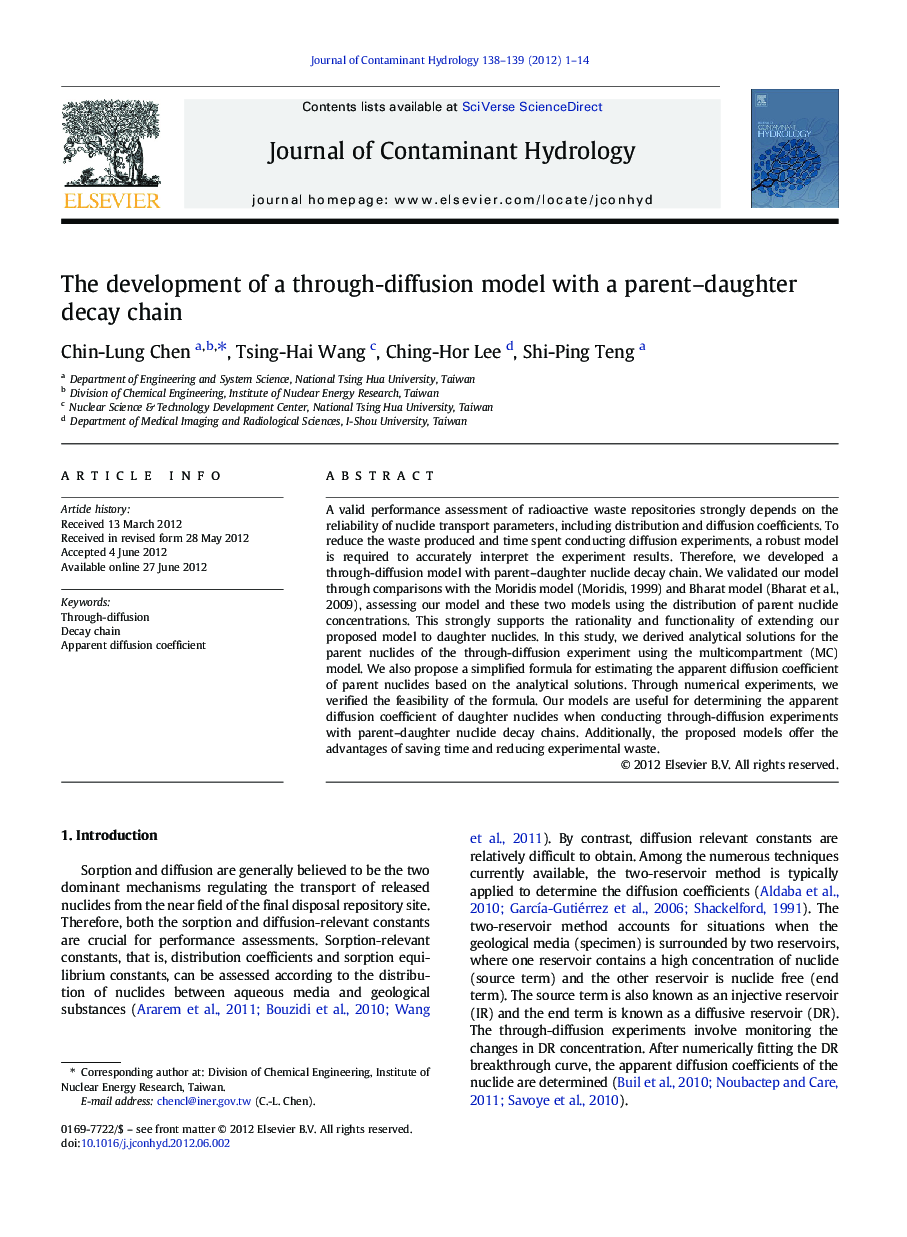| Article ID | Journal | Published Year | Pages | File Type |
|---|---|---|---|---|
| 4546790 | Journal of Contaminant Hydrology | 2012 | 14 Pages |
A valid performance assessment of radioactive waste repositories strongly depends on the reliability of nuclide transport parameters, including distribution and diffusion coefficients. To reduce the waste produced and time spent conducting diffusion experiments, a robust model is required to accurately interpret the experiment results. Therefore, we developed a through-diffusion model with parent–daughter nuclide decay chain. We validated our model through comparisons with the Moridis model (Moridis, 1999) and Bharat model (Bharat et al., 2009), assessing our model and these two models using the distribution of parent nuclide concentrations. This strongly supports the rationality and functionality of extending our proposed model to daughter nuclides. In this study, we derived analytical solutions for the parent nuclides of the through-diffusion experiment using the multicompartment (MC) model. We also propose a simplified formula for estimating the apparent diffusion coefficient of parent nuclides based on the analytical solutions. Through numerical experiments, we verified the feasibility of the formula. Our models are useful for determining the apparent diffusion coefficient of daughter nuclides when conducting through-diffusion experiments with parent–daughter nuclide decay chains. Additionally, the proposed models offer the advantages of saving time and reducing experimental waste.
► We developed a through-diffusion model with a parent–daughter decay chain. ► We demonstrated the rationality and functionality of our proposed model. ► We derived an approximate formula to determine diffusion coef. of parent nuclide with decay effect.
